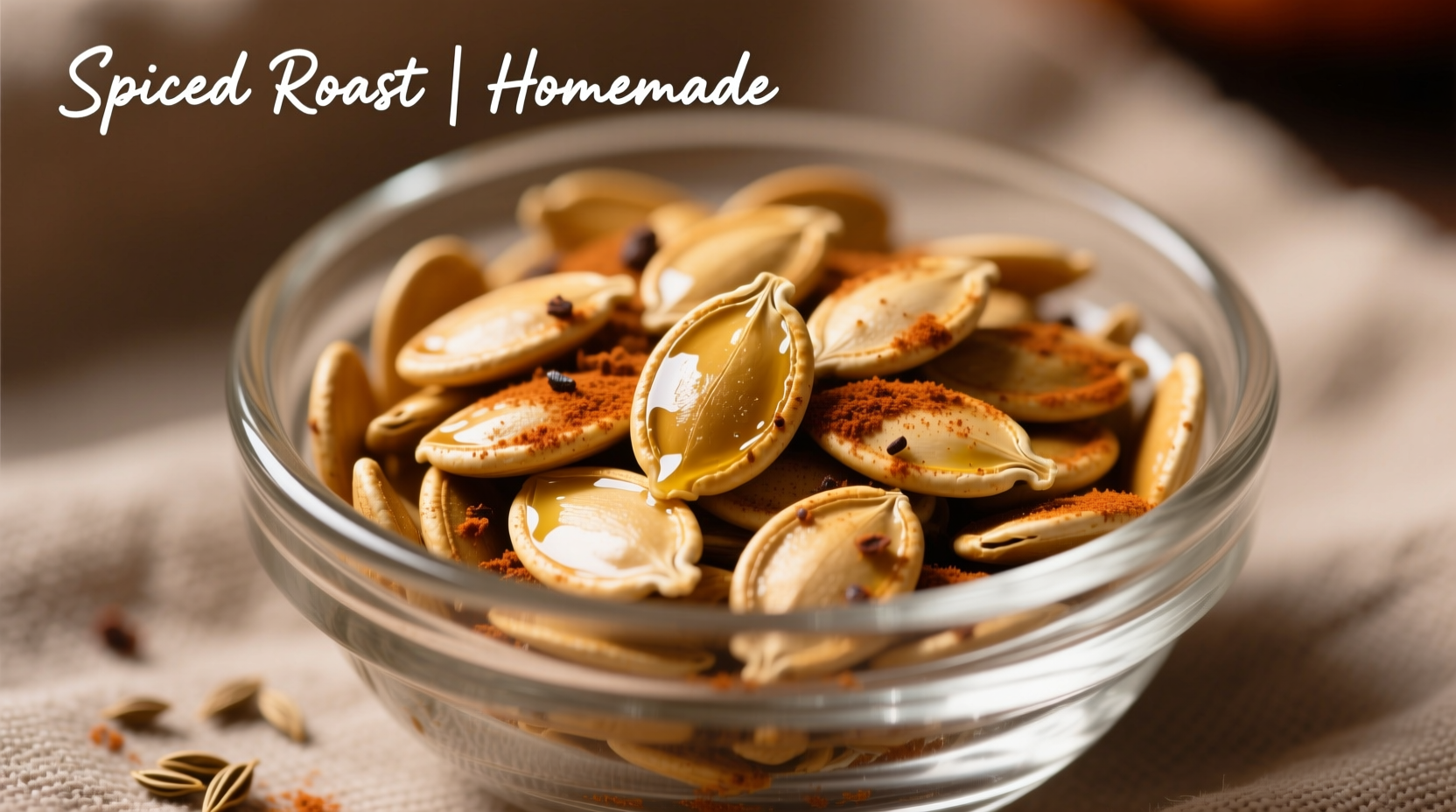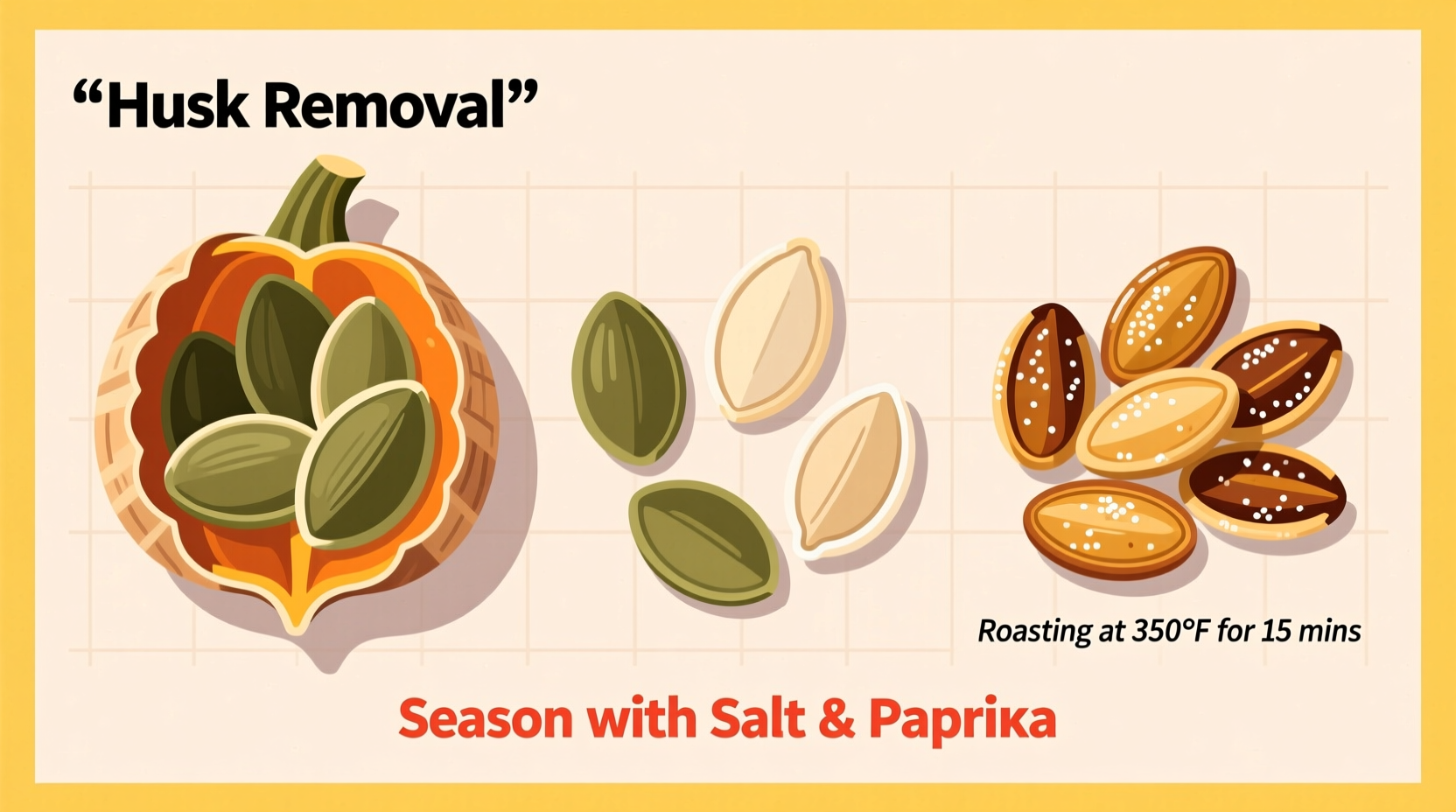Immediately roast your pumpkin seeds with olive oil and salt at 300°F (150°C) for 30-45 minutes for a crunchy, nutritious snack. This simple method transforms wasted seeds into a protein-rich treat packed with magnesium, zinc, and healthy fats—no special equipment required.
Every Halloween, millions of pumpkins get carved, and countless seeds get tossed in the trash. But those humble pumpkin seeds—also known as pepitas—are nutritional powerhouses waiting to be unlocked. With just a few simple steps, you can transform what would be waste into delicious, nutrient-dense snacks and ingredients that enhance everything from salads to baked goods.

The Quick Fix: Basic Roasted Pumpkin Seeds
When you're carving a pumpkin and staring at that pile of stringy seeds, your immediate goal is simple: clean and roast them with minimal effort. This method takes under an hour from pumpkin to plate.
Cleaning and Drying (15 minutes)
Separate seeds from the pumpkin pulp by hand, then rinse thoroughly in a colander. For best results, soak seeds in a bowl of cold water for 5 minutes—this helps separate remaining pulp. Spread cleaned seeds on paper towels and pat dry. For crispier results, let them air-dry for 1 hour.
Roasting Process (35-45 minutes)
Toss 1 cup of dried seeds with 1 tablespoon olive oil and ½ teaspoon salt. Spread evenly on a parchment-lined baking sheet. Roast at 300°F (150°C) for 30-45 minutes, stirring every 15 minutes, until golden brown and crisp. The lower temperature prevents burning while ensuring thorough drying.
| Preparation Method | Time Required | Crispness Level | Best For |
|---|---|---|---|
| Quick Roast (300°F) | 45 minutes | ★★★☆☆ | Immediate snacking |
| Overnight Dry + Roast | 12+ hours | ★★★★☆ | Maximum crunch |
| Stovetop Toasting | 15 minutes | ★★★☆☆ | Small batches |
| Dehydrator Method | 6-8 hours | ★★★★★ | Raw food diets |
Flavor Variations That Impress
Once you've mastered the basic roast, experiment with these chef-approved seasoning combinations that transform pumpkin seeds into gourmet treats. Professional kitchens use these same techniques to create signature snacks.
Savory Options
- Everything Bagel: Toss with ½ tsp each garlic powder, onion powder, sesame seeds, and poppy seeds before roasting
- Smoky Chipotle: Mix with 1 tsp smoked paprika, ¼ tsp chipotle powder, and lime zest after roasting
- Umami Bomb: Sprinkle with nutritional yeast and tamari during the last 10 minutes of roasting
Sweet Options
- Cinnamon Sugar: Toss with 1 tbsp melted coconut oil, 1 tsp cinnamon, and 2 tsp maple syrup before roasting
- Spiced Chai: Combine with ½ tsp ginger, ¼ tsp cardamom, and a pinch of cloves
- Chocolate-Dipped: After cooling, melt dark chocolate and stir in ¼ cup seeds for a sweet-salty treat
When Basic Roasting Isn't Enough: Advanced Techniques
For food enthusiasts seeking perfect texture and flavor development, these professional techniques make a noticeable difference. According to culinary research from the Culinary Institute of America, proper seed preparation significantly impacts both nutritional availability and flavor complexity.
The Soaking Secret
Soaking seeds in salt water (2 tablespoons salt per 4 cups water) for 7-8 hours before drying neutralizes enzyme inhibitors and improves digestibility. This traditional preparation method, documented in nutritional studies on seed preparation, makes nutrients more bioavailable while yielding crisper results.
Temperature Timeline for Perfect Roasting
0-15 minutes: Moisture evaporation phase - seeds steam themselves dry
15-30 minutes: Maillard reaction begins - golden color develops
30-40 minutes: Optimal crispness window - check every 5 minutes
40+ minutes: Risk of burning increases significantly - monitor closely
Practical Applications Beyond Snacking
Pumpkin seeds aren't just for eating by the handful. Incorporate them into your regular cooking routine with these practical applications that professional chefs use to add texture and nutrition to everyday dishes.
Salad Supercharger
Swap croutons with roasted pumpkin seeds in green salads. The healthy fats help your body absorb fat-soluble vitamins from vegetables. For best results, add seeds just before serving to maintain crunch.
Baking Booster
Replace 25% of nuts in breads and muffins with pumpkin seeds. They add moisture retention and a subtle nutty flavor without overpowering other ingredients. In banana bread, they create delightful textural contrast.
Culinary Garnish
Finely ground pumpkin seeds make an excellent finishing touch for soups and roasted vegetables. Mexican cuisine traditionally uses this technique in mole verde, where ground pepitas thicken and enrich the sauce while adding nutritional value.
Storage Guidelines: Keeping Your Harvest Fresh
Proper storage determines how long your pumpkin seeds maintain flavor and nutritional value. The FDA recommends storing roasted seeds in airtight containers to prevent rancidity caused by their healthy fat content.
- Room temperature: 2 weeks in airtight container away from light
- Refrigerated: 2 months with minimal quality loss
- Frozen: 6 months - spread on baking sheet first, then transfer to freezer bag
Signs of spoilage include musty odor, yellowish discoloration, or a rancid, bitter taste. When in doubt, discard—rancid fats provide no nutritional benefit.
Nutritional Powerhouse Backed by Science
Pumpkin seeds aren't just tasty—they're packed with nutrients that support multiple aspects of health. According to USDA FoodData Central, a quarter-cup serving provides:
- 10 grams of complete plant-based protein
- 130% of your daily magnesium needs
- 23% of recommended zinc intake
- Significant amounts of iron, potassium, and healthy fats
Research published in the Journal of Medicinal Food shows pumpkin seed consumption supports heart health through multiple mechanisms, including blood pressure regulation and cholesterol management. Their high tryptophan content also contributes to better sleep quality when consumed several hours before bedtime.
Common Mistakes to Avoid
Even experienced cooks make these pumpkin seed preparation errors that compromise results:
- Skipping the drying step - Wet seeds steam rather than roast, creating chewy rather than crisp results
- Overcrowding the baking sheet - Seeds need space for moisture to evaporate properly
- Using high heat - Temperatures above 325°F (160°C) burn the exterior while leaving interiors moist
- Adding sugar too early - Sugars burn at lower temperatures than seeds need for proper drying











 浙公网安备
33010002000092号
浙公网安备
33010002000092号 浙B2-20120091-4
浙B2-20120091-4